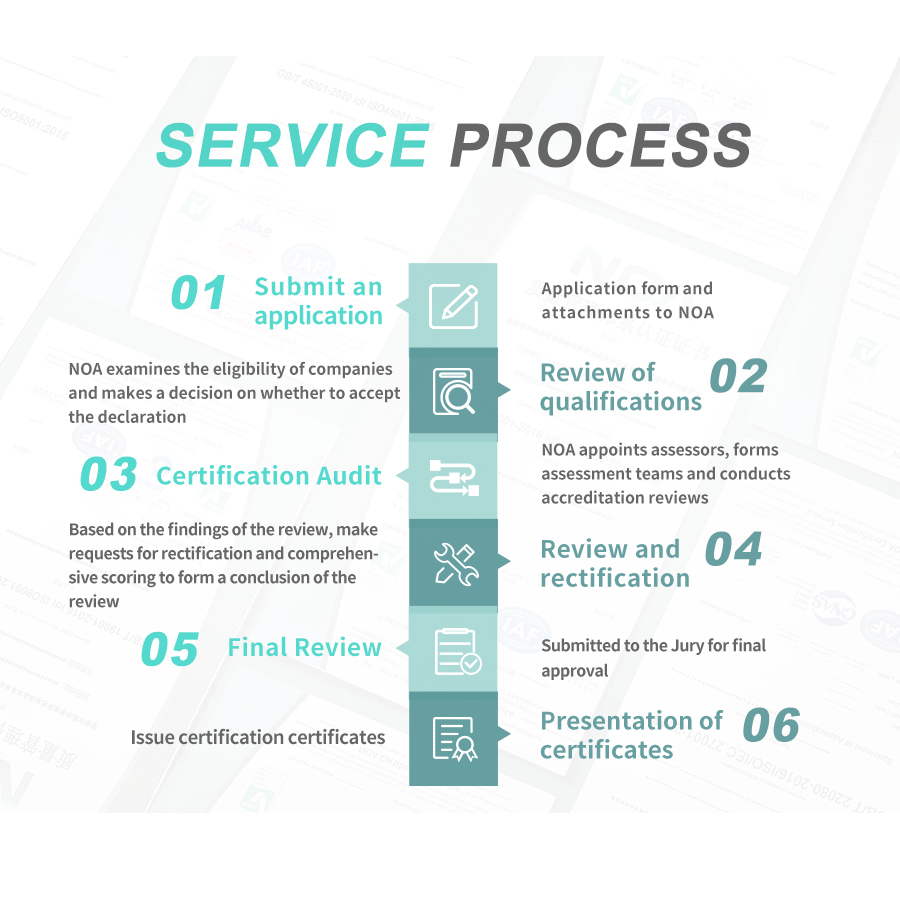
ISO 45001, a new occupational health and safety management system standard used by the international organization for Standardization (ISO) to replace OHSAS 18001, was published in 2016. This new standard is used to help organizations around the world ensure the health and safety of their workers. The positioning of this standard is to replace the OHSAS 18001 standard that has been widely used in the world, and the ultimate goal is still to improve the existing occupational health and safety performance.
It provides a powerful and effective process for improving the work safety of the global supply chain. Designed to help organizations of all sizes and industries, the new international standards are expected to reduce workplace injuries and diseases worldwide. ISO 45001 provides effective and usable guidance to government agencies, industries and other affected stakeholders to improve staff safety in countries around the world. With an easy-to-use framework, it can be applied to factories and production facilities, no matter where they are located.
ISO 45001 is a new OHSMS international standard. Although similar to OHSAS 18001, the new ISO 45001 standard adopts the top-level framework of annex SL in the revised new ISO management system standard. Since ISO 45001 aims to integrate with other ISO management system standards and ensure high compatibility with the new version of ISO 9001 (quality management) and ISO 14001 (Environmental Management), enterprises that have implemented ISO standards will have an advantage if they decide to carry out ISO 45001 work. With the expansion of enterprise scale and the improvement of production intensity, higher requirements are put forward for the quality management and operation mode of enterprises. Enterprises must adopt modern management mode to make all production and operation activities, including safety production management, scientific, standardized and legal.

ISO 45001 is a new OHSMS international standard. The main provisions and changes are:
1、 ISO 45001 standard – key aspects and organizational environment
ISO 45001 focuses on the organizational environment, which requires the organization to take into account the expectations of stakeholders on occupational health and safety management.
The organization must identify which stakeholders are related to OHSMS and determine the relevant provisions for such stakeholders. The purpose of ISO 45001 is to help organizations fully understand the important factors that can have positive and negative effects and how to manage their occupational health and safety responsibilities to employees. It is concerned with matters that have an impact on the organization's achievement of expected results. These include the goals it has set for OHSMS, such as fulfilling commitments related to OHS policies.
2、 OHS leader
Senior management must now demonstrate that they have joined the OHSMS by directly participating and incorporating OHS performance into strategic planning.
Senior management must also make OHSMS effective through active leadership, support and communication with employees, and promote and lead the organization's OHSMS culture. This new standard clearly stipulates the responsibilities of senior management for occupational health and safety management. The purpose of this is to ensure that the ultimate responsibility does not fall on the health and safety or other management personnel in the organization.
3、 Participation and consultation
The standard requires the top management of the organization to encourage employees and their representatives to consult and participate, as these are key factors in OHS management.
Consultation means two-way communication - dialogue and communication - and involves providing timely information needed by employees and representatives before the organization makes decisions. The OHS management system relies on employee participation, which enables employees to make decisions about OHS readiness and provide feedback on reform proposals. The organization must encourage employees at all levels to report hazards so that preventive and corrective actions can be taken in a timely manner. Employees must be able to report and propose areas for improvement without fear of dismissal, punishment or similar retaliation.
4、 Risk based approach to OHSMS
When developing and implementing OHSMS, a risk-based approach is required, which is closely consistent with the focus on the organizational environment.
The organization must identify the risks and opportunities that need to be addressed to ensure that the OHSMS can achieve the expected results. These risks and opportunities include situations related to or determined by the organizational environment. To cope with such risks and opportunities, the organization must develop an action plan, introduce it into the OHSMS process for implementation, and evaluate its effectiveness.
5、 Outsource
The standard requires the organization to ensure that outsourcing processes that affect OHSMS are developed and controlled.
When outsourced products and / or services are under the control of the organization, the risks of suppliers and contractors must be effectively managed.
○ ISO 45001 will be easier to integrate with other ISO management system standards, such as ISO 9001:2015 and ISO 14001:2015.
○ improve the viability of the organization through active risk prevention, innovation and continuous improvement;
○ enhance compliance with laws and regulations while reducing business losses;
○ demonstrate the brand's sense of responsibility by working on safety, health and sustainability.











Tel:+86-400 821 5138
Fax:+86-21 3327 5843
Email:noa@noagroup.com